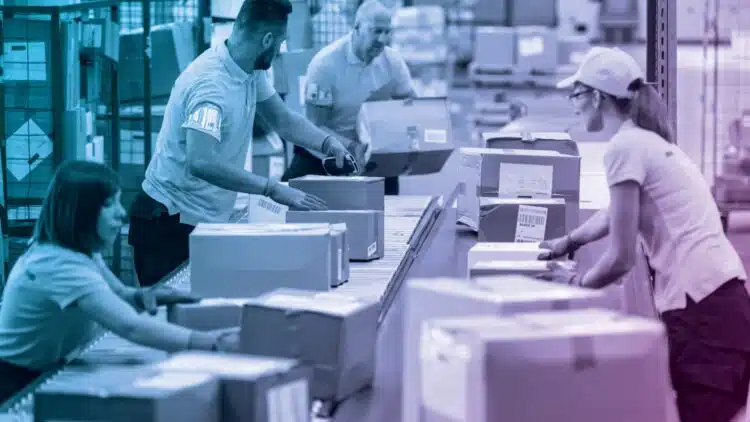Big data in shipping and logistics management is a big way to lower your freight spend. Everyone talks about big data, but what do they really mean?
Big data in logistics is the merging of order level data with shipment and freight invoice level data. Traditionally, this information has been housed in three different silos, and the merging has had to be performed manually. The technology advancement that has made big data more accessible hasn’t changed that much, but what has changed is the price. Recently, big data has become more affordable through different pricing models such as Software as a Service (SaaS). This has allowed big data solutions, like ours, to become more affordable for the medium to small size shipper.
Start Harnessing the Power of Big Data to Create a Self-Funding System
What I’ve seen in the industry is that one or two of the silos of data will be merged together in a manual process, then used during a one-time procurement such as a RFP for rates. Once the procurement event is completed, the results may be measured one more time. But when the results show that the rates aren’t lower, nobody knows why. Utilizing this data for a one-time procurement event is not very strategic, instead it is very tactical.
At RateLinx, we are helping our customers harness combined datasets strategically and provide real-time visibility while we do it. The overall strategy is to create a self-funding system. We do this by first performing the freight audit, and then begin merging with order level and shipment data. Then we perform the RFP’s in a more strategic way where we are able to lower our customer’s spend and increase the carrier’s profit at the same time. Once this is in place, we utilize these rates more efficiently through the mode optimization process in ShipLinx.
After all of this is done, the real ah-ha moment arrived when we had a customer take all of this data, and freight savings our tools helped them achieve, to do a network design on their supply chain. This multiplied the freight savings by a factor of 10! This has really opened my eyes to the value that combined data has to an organization. Our tools and data gave them the visibility and information they needed to take what was already $8 million in freight savings and turn it into $80 million in savings.
Six Ways You Can Leverage RateLinx Big Data to Enhance Your Supply Chain
- LTL Rates. Moving to the carrier’s rate base and off of a foreign rate base has helped customers save anywhere from 10%-40% off LTL freight spend while increasing carrier profit. You no longer have to be a shrewd negotiator, instead, you can collaborate with your carriers and have a real win-win outcome.
- Auction Module. Leverage your historical shipment costs to set the starting price on ad-hoc shipments such as a Truckload or Intermodal shipment. Our customers have seen a 15%-20% decrease in cost for these types of shipments through the ability to find and take advantage of carrier’s backhaul needs.
- Mode Optimization. After our customers have lowered their freight spend through strategic sourcing events such as the LTL RFP, they can now take advantage of those low rates in ShipLinx TMS. Removing the static weight breaks that were used to determine when to ship with small parcel vs. LTL has allowed our customers to enjoy another 10% savings on their combined LTL and small parcel spend.
- Freight Profit. Start measuring the actual cost of freight compared to what you are quoting and charging the customer for freight. We have helped customers uncover multi-million dollar freight deficits and uncover where freight is not being billed correctly. By fixing the profit leak they can lower their freight markup on other customers. This makes them more competitive and ultimately drives sales higher.
- Network Design. Using the freight audit process data combined with shipment and order level data collected by ShipLinx TMS has allowed several customers to optimize their overall supply chain network design. Re-engineering the supply chain has resulted in our customers multiplying their freight savings by a factor of 10.
- Real-Time Measurement. The most under looked piece of the RateLinx solution is the constant measurement through Dashboard. The common theme from prospective customers is that they tried doing this before to later realize they didn’t save anything. By having a closed loop system like our Enterprise Suite, you have a real-time look at how everything is performing.
One of our customers rolled out a new product last year and the freight characteristics were completely different than their other products. The Lost Savings KPI on the Dashboard showed a spike when they started rolling out the new product. We were able to work with the customer and their carriers to get the issue resolved within 2 weeks. By the customer’s estimations, they said it saved them about $2 million because they would have measured everything six months later instead of seeing it in real-time.
What’s next for Big Data?
I see more companies having to adopt a big data strategy in order to stay competitive. I always think of the old IBM commercial where they show a busy intersection and a man says, ‘If all you could do was to take a snapshot of the road from 5 minutes ago, how would know when to cross the road? This is how companies have been managing their supply chains and they have often based their planning on how their supply chain looked a year ago.
If you have any questions about getting up to date with big data and how it can enhance your supply chain, contact us.




